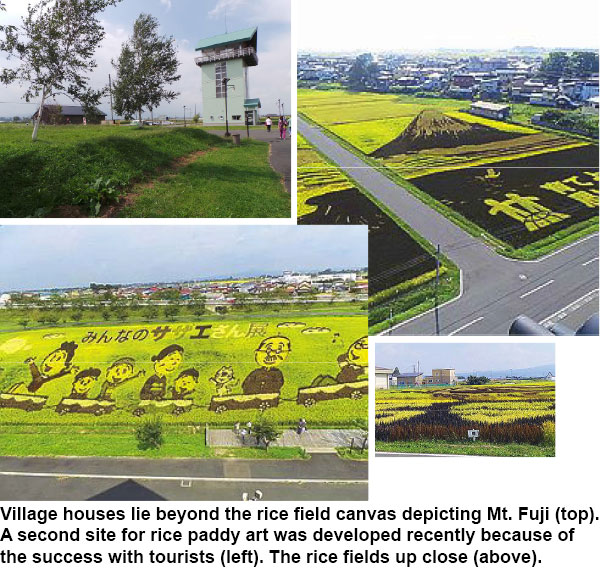Art in rice paddies
MANILA, Philippines - What happens when a forward-looking village government, a private business chamber and farmers get together for an innovative project? It can only spell success – economic, social and environmental profits plus tourism income they never expected.
In our first visit to farms in Aomori prefecture, our Study Mission for Agricultural Productivity sponsored by the Asian Productivity Organization (APO) first focused on the Inakadate Rice Paddy Art area. What an experience. The first word you will hear will be “wow!”
In Aomori prefecture, northern Japan, the townspeople discovered what they unearthed – literally – as their ancestral rice paddy cultivation dating back to the Yayoi era. They found carbonized rice as well. They thought it may be a good idea to revive the rice cultivation thrown in with some art form.
They collected nine different colors of cultivars of rice from among 400 varieties of the grain. For this project they designated 15,000 hectares of rice paddies as their canvas for what is now called rice paddy art. Imagine using the different colors of rice as your paint and the fields as your canvas.
From 1993 to 2001 they would make simple drawings on paper, reproduce graphic images on the rice fields and visitors would enjoy viewing the artwork from a four-story deck. They would do mountain forms and other geometric designs, much to the public’s amusement. The activity started with planting in June and peak of viewing in August, and finally harvesting the rice in September.
At first they just did it to attract tourists to Inakadate town and these visitors then brought some added income to the business owners in the area. The village office would be the administrator of the activities and would also be the site of a souvenir shop in the same building where the observation deck is located.
As more tourists came to their town, they started to challenge themselves into making the designs more complicated, adding colors through the use of the different colors of rice.
In 2003 they started commissioning designers from among their townsfolk and the village committee would then start planning even before the month of June of the next rice season.
Today, they invite tourists to come in June, and allow them to plant rice on the two areas (called the canvas), especially on the easier parts to plant such as backgrounds and simple one-color areas of the design.
The complicated colors – for example a printed kimono of a courtesan or the pointillism style for a Hollywood star – need more work and is done by the women’s council, whose attention to detail makes them the specialists for the finer details. Some areas of the artwork demand a different color for every few centimeters of paddy, and these delicate areas are planted first, before the rest of the artwork is “filled in” or rendered by visitors who want to experience planting and taking part in making a masterpiece.
Come August when the colors are brightest is also the peak of visitor visits. As many as a few thousand line up each Sunday in August to view the works of art. So much so that the village committee thought it best to add another site to accommodate the increasing number of guests.
In September, all Sundays are devoted to harvest and visitors, as many as a thousand people, harvest the rice by color (background first) and each Sunday, one can slowly see a relief coming out as the sides and background rice are harvested.
Come November, those who harvested come back to claim their souvenir share of the rice and a rice festival is celebrated to thank all those who may have taken part during the planting or during the recent harvest.
So far, the village has earned an annual income of 39-million yen annually for this rice paddy art activity. Investments, or production costs, including planning and other expenses amount only to about 5-million yen, all in.
Other than making much income for the village, rice paddy art has taught the Japanese and the foreign tourists how to value each grain of rice. Children are exposed to the realities and hardship of rice farming, making them more responsible citizens and mindful consumers of rice.
It must be a haiku experience for some. To get your feet wet and dirty in the mud during planting, and getting your back sore from all that bending. And then finally seeing your work of art, and then tasting the fruits of your labor.
Inakadate truly received a gift from their ancestors with this discovery and for the past 20 years, Inakadate has never been the same.
- Latest
- Trending



















